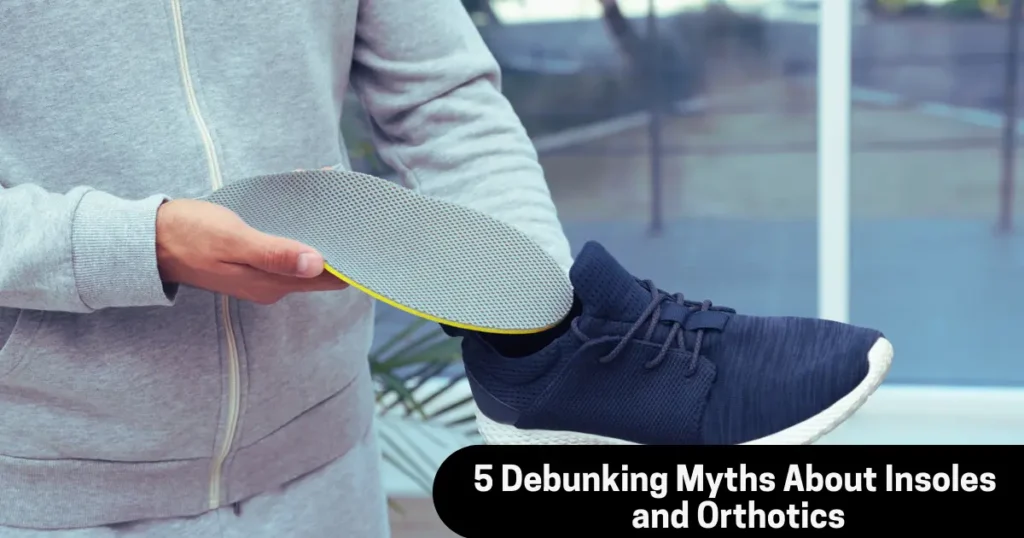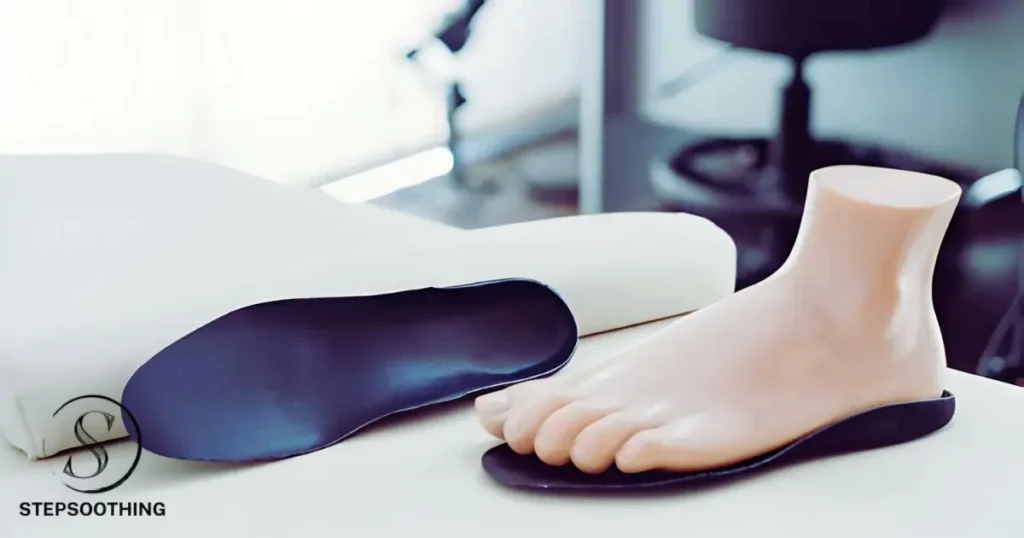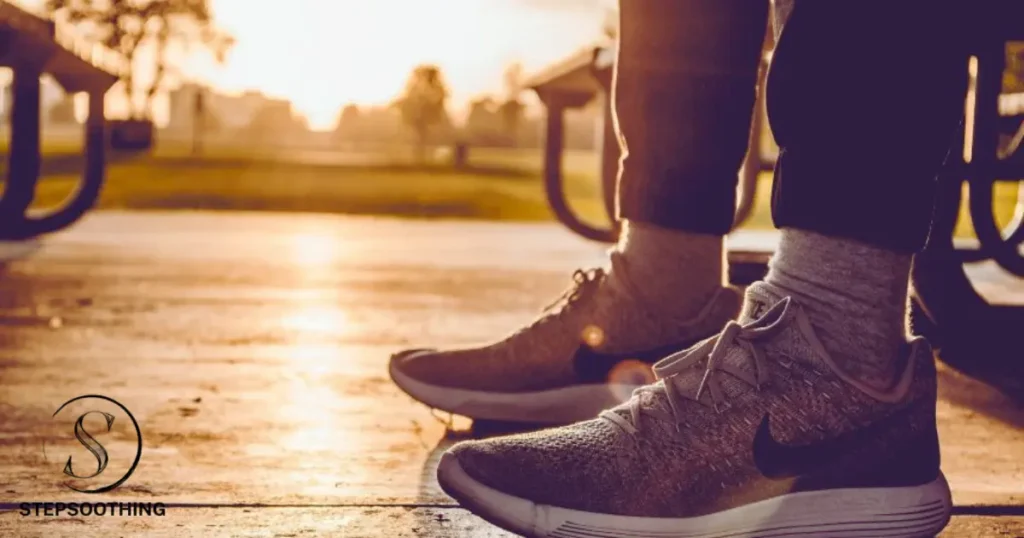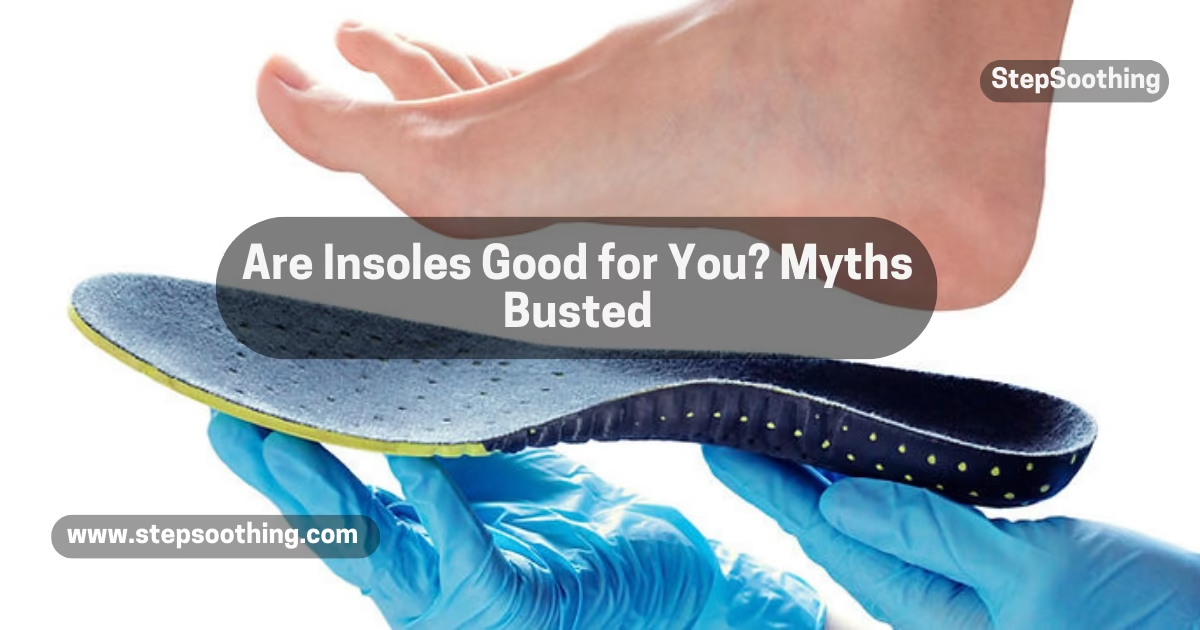Many people believe insoles are only for those with foot pain, but this is not true. Insoles can help improve comfort, foot alignment, and stability for everyone. Understanding the myths about insoles will help people make better choices for their foot health. Additionally, the benefits of using insoles for foot health extend beyond just comfort, as they contribute to overall posture and mobility.

Understanding Insoles
Insoles, also called shoe inserts, provide support, cushioning, and shock absorption. They come in different types, such as soft orthotics, rigid orthotics, semi-custom orthotics, and diabetic insoles. Some are full-length insoles, while others are 3/4 length insoles, heel cups, or metatarsal pads. The right insole depends on a person’s foot mechanics and foot conditions.
Common Myths About Insoles
Myth 1: Softer Insoles Are Always Better
Many people think softer insoles are the best option for comfort. While cushioning is important, too much softness can “pamper the problem” without fixing foot misalignment. Insoles should provide both comfort and proper support to avoid foot fatigue and biomechanical issues.
Myth 2: Insoles Are Ineffective for Foot Pain
Some believe insoles do not help with foot pain, but this is false. Properly fitted insoles can relieve pressure, absorb shock, and reduce strain on the feet. People with plantar fasciitis, bunions, flat feet, heel spurs, metatarsal pain, and shin splints can benefit from the right insoles. In fact, science says insoles can give real relief from knee discomfort, making them a practical solution for many individuals.
Myth 3: Insoles Fix All Foot Problems
While insoles can improve foot stability, foot support, and alignment, they are not a cure-all. Some severe foot conditions may require additional treatments like braces, custom orthotics, or professional guidance from a podiatrist or orthotist.
Myth 4: All Insoles Are the Same
Different insoles serve different purposes. Some provide arch support, while others focus on cushioning or pressure relief. Choosing the right type based on a person’s foot structure and daily activities is key to injury prevention and improving quality of life.
Myth 5: Insoles Are Only for Athletes
Athletes use insoles to enhance performance and reduce joint impact, but insoles benefit everyone. They help with daily activities by improving comfort, reducing fatigue, and preventing foot injuries.

Separating Fact from Fiction for Better Foot Health
Do Insoles Really Help: Yes, insoles provide support, shock absorption, and cushioning to alleviate foot pain and improve alignment. They benefit both individuals with foot conditions and those seeking better comfort.
What Are the Side Effects of Wearing Insoles: Improperly fitted insoles can cause discomfort, blisters, or worsen foot conditions. A professional gait analysis ensures the right fit.
Is It Okay to Wear Insoles: Yes, insoles improve foot comfort and stability. However, using the wrong insoles may lead to foot pain.
Why Did NASA Invent Shoe Insoles: NASA developed shock-absorbing insoles for astronauts to reduce the impact on their feet in space. This technology is now used in modern insoles to enhance cushioning and support.
When Should I Stop Wearing Insoles: If insoles cause discomfort or worsen foot pain, it may be time to adjust or replace them. Consulting a podiatrist helps determine the best option.
Do Insoles Boost Height: Some insoles, like heel lifts, can temporarily make a person appear taller. However, they do not permanently increase height.
Can Insoles Help Alleviate Back Pain: Yes, insoles provide proper foot alignment, reducing stress on the lower back and improving posture, which can insoles help alleviate back pain effectively.
Choosing the Right Insole
Selecting the right insole involves understanding foot mechanics and specific needs. A gait analysis or digital scanning by a professional can identify pressure points and misalignment. Custom-fit insoles offer personalized support, while off-the-shelf options work for general foot comfort. Learning how to choose the right insoles ensures the best fit for individual needs.
Types of Insoles and Their Functions
- Soft Orthotics: Provide extra cushioning but may lack firm supportive structures.
- Rigid Orthotics: Help correct foot misalignment but may require a breaking-in period.
- Semi-Custom Orthotics: Offer a balance of comfort and support.
- Full-length Insoles: Cover the entire footbed for shock absorption and foot stability.
- 3/4 length Insoles: Provide targeted arch support while allowing toe flexibility.
- Heel Cups and Heel Lifts: Help reduce heel pain and improve alignment.
- Metatarsal Pads: Relieve pressure on the ball of the foot.
- Diabetic Insoles: Designed to minimize pressure points and protect sensitive feet.
Foot Problems Addressed by Insoles
Insoles help manage several foot conditions, including:
- Plantar Fasciitis: Reducing heel pain through proper arch support.
- Bunions: Providing cushioning to relieve discomfort.
- Flat Feet: Supporting the foot structure to prevent overpronation.
- Heel Spurs: Absorbing impact and minimizing joint impact.
- Metatarsal Pain: Distributing weight evenly to reduce foot fatigue.
- Shin Splints: Improving foot alignment and reducing strain on the lower legs.

The Importance of Proper Fit & Professional Guidance
- Breaking-in Period: Some insoles require time for adjustment before they feel natural.
- Anatomical Perfection: No single insole works for everyone.
- Custom Fit: A podiatrist or orthotist can provide the best recommendations.
- Gait Analysis and Digital Scanning: Help detect pressure points and improve alignment.
Benefits of Insoles Beyond Foot Pain
- Injury Prevention: Proper foot mechanics reduce strain and lower injury risks.
- Quality of Life: Enhances daily activities and athletic performance.
- Foot Stability and Balance: Improve posture and prevent fatigue.
- Joint Impact Reduction: Helps distribute weight evenly across the foot.
Insoles play an important role in foot health by providing cushioning, support, and alignment. They can help prevent foot pain, improve posture, and reduce fatigue. Debunking myths about insoles helps people make informed choices for better foot comfort and stability. Additionally, knowing how to choose the right insoles ensures individuals get the maximum benefits of using insoles in their daily lives.
People Also Asked
Can wearing insoles improve posture?
Yes, insoles can help correct foot alignment, which in turn improves overall posture by reducing strain on the knees, hips, and lower back.
How long do insoles last before needing replacement?
The lifespan of insoles depends on usage and material, but most should be replaced every 6 to 12 months for optimal support and comfort.
Can insoles help with back pain?
Yes, insoles provide proper foot alignment, reducing stress on the lower back and improving posture, which can help alleviate back pain.
Do I need different insoles for different activities?
Yes, specific insoles are designed for walking, running, standing for long periods, and athletic performance. Choosing the right type enhances comfort and support.
Are custom-made insoles better than store-bought ones?
Custom insoles are tailored to your foot shape and specific needs, offering superior support, while store-bought options can provide general comfort but may not address unique foot conditions.



